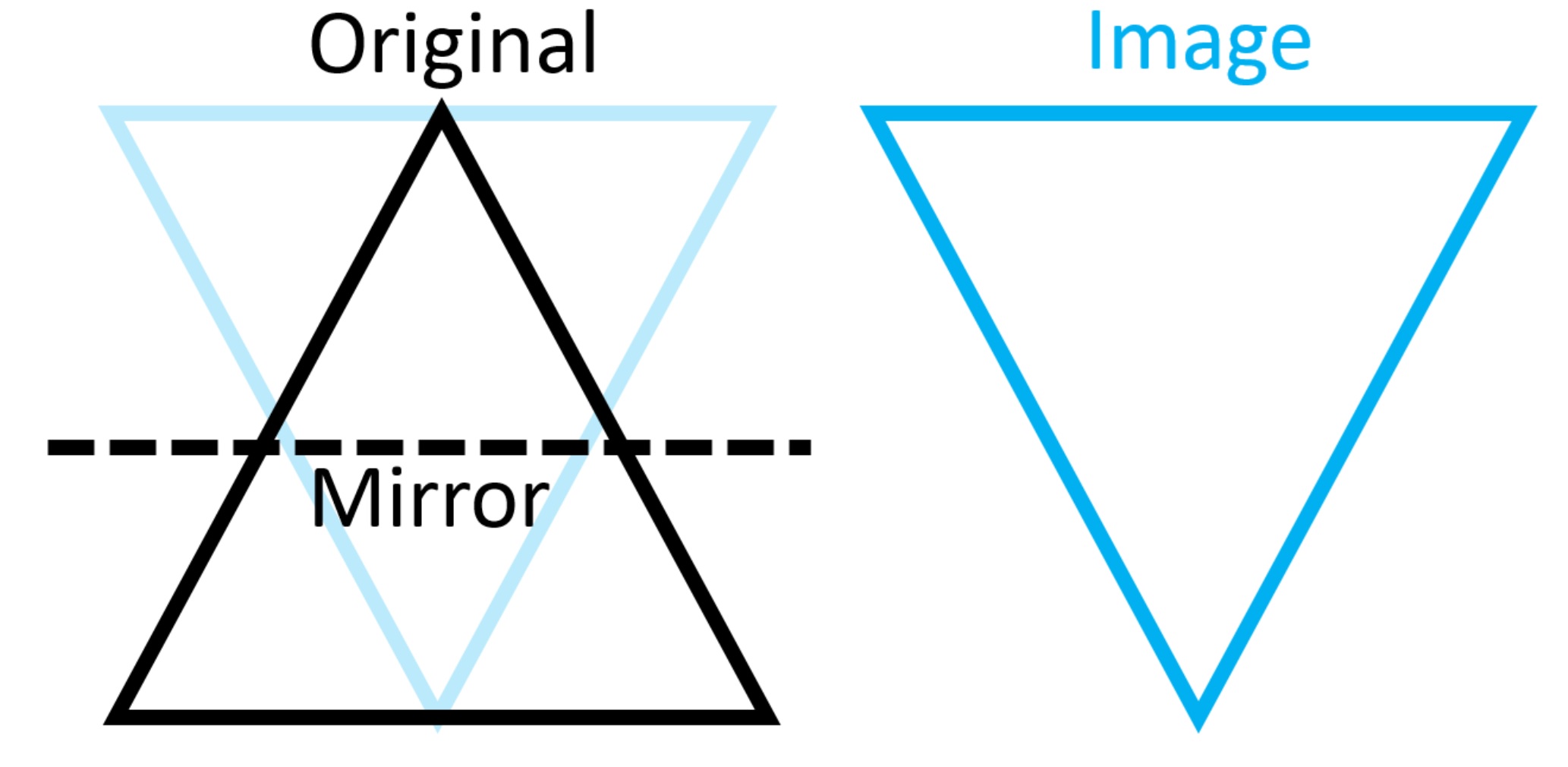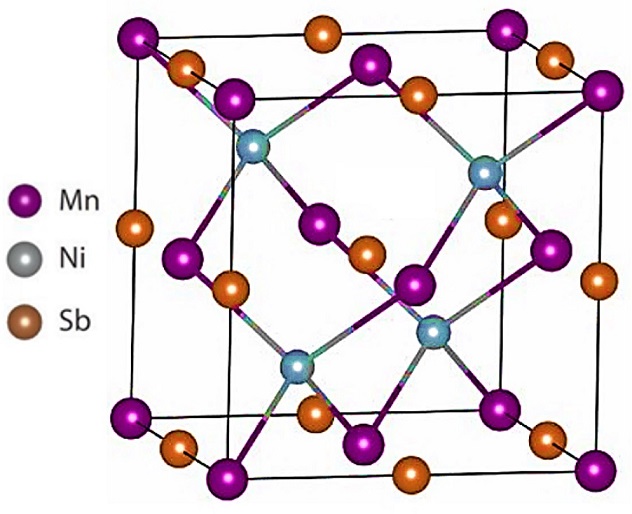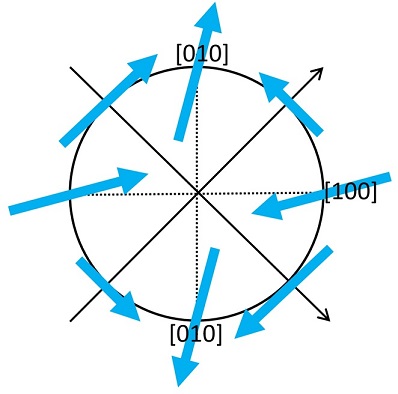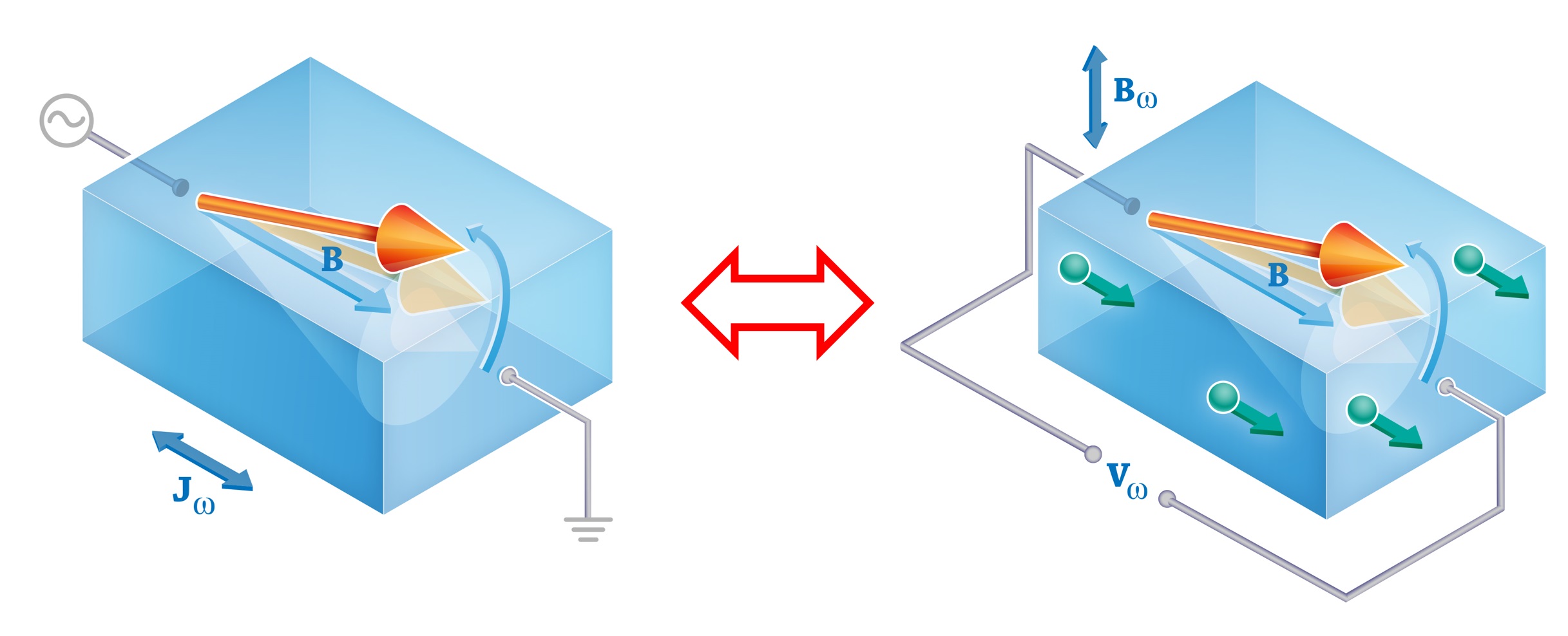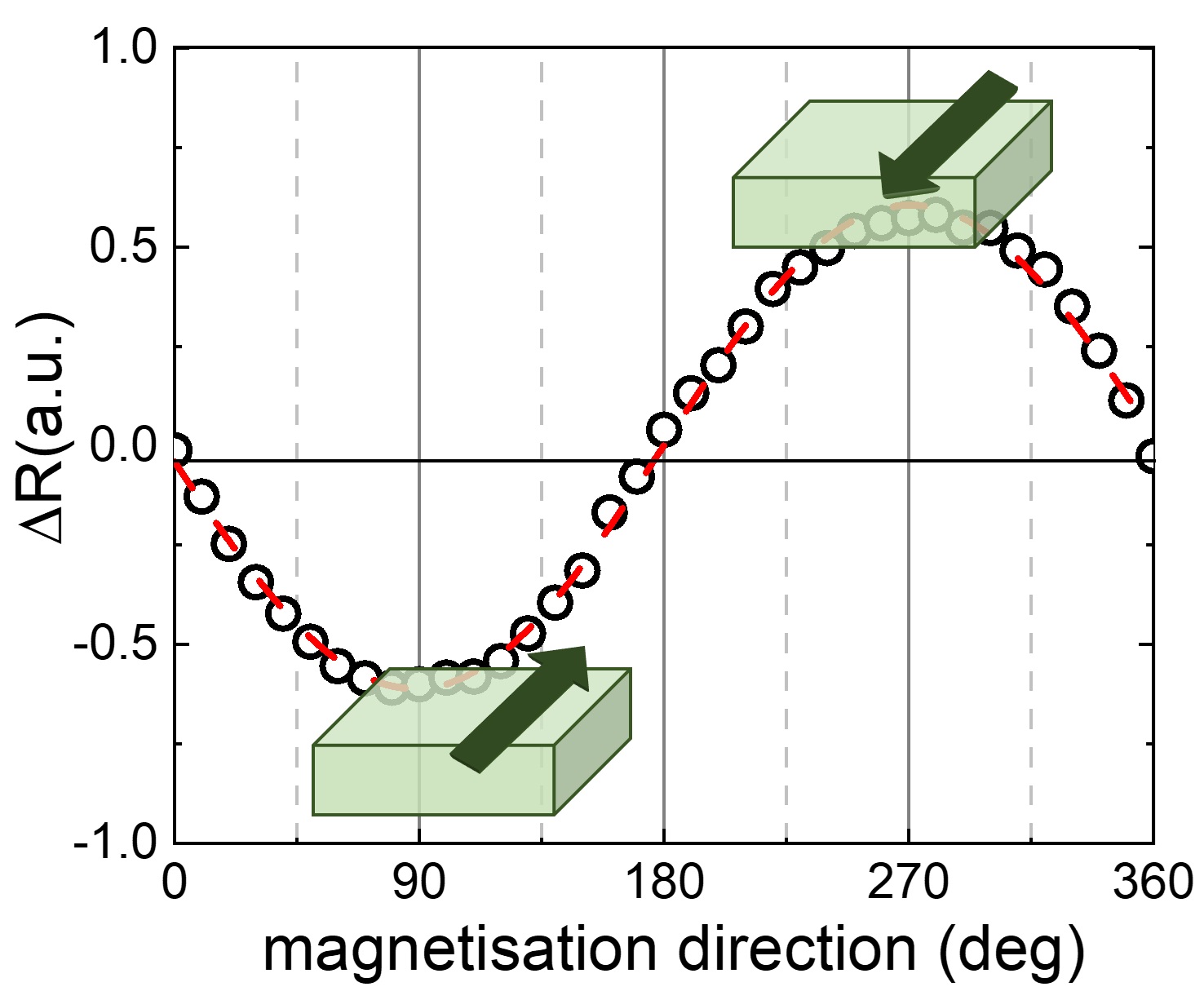According to Neumann’s principle any physical observable of a condensed matter system must reflect its symmetry. When symmetry is broken new physics emerges. We are interested in how the breaking of symmetry combined with the spin-orbit coupling affects the properties of a condensed matter system, especially for spintronics applications.
|
In particular, we are interested in the correlation between charge motion and spin orientation established when mirror reflection symmetry is broken within a crystal or in a heterostructure. This allows changing the magnetic state of a magnet by simply passing an electrical current through it and, vice-versa, reading its magnetic state electrically by simply measuring a voltage. The triangle is a simple example of a structure that is asymmetric with respect to mirror reflection, as shown on the left. |
|
|
This is the unit cell of ferromagnetic half Heusler NiMnSb, its mirror image on selected planes looks different than the original unit cell, i.e. the unit cell is asymmetric. We found that if we pass an electrical current through this ferromagnet a non-equilibrium spin population is induced, which generates torques on the overall magnetisation. In this way we can write the magnetic state electrically and at room temperature. |
|
|
The direction of the non-equilibrium spin depends on the direction of the electrical current with respect to the crystal axes. In the polar plot on the right any radial vector represents a possible direction for the electrical current in the (001) crystal plane, while the fat arrows show the corresponding direction of the electrically induced non-equilibrium spin. The symmetry of the polar plot entirely reflects the symmetry of the crystal and can be tuned by strain for example. Physical Review Materials 5, 014413 (2021)
|
|
|
We showed that the correlation between charge motion and spin is reciprocal and also works in the opposite direction: when a non-equilibrium spin population relaxes within an inversion-asymmetric ferromagent, it acquires a net momentum, giving rise to an electrical current. Magnons, also called spin waves, are the quanta of spin excitation. We have shown that the pumping of coherent magnons results in an oscillating electrical current. Nature Nanotechnology 10, 50–54 (2015)
|
|
|
Not only spin dynamics, but also a static magnetic state can be read electrically. We discovered that the break of inversion symmetry combined with the spin-orbit coupling gives rise to additional anisotropic magnetoresistance terms. Differently from the other known terms, these ones are unidirectional and therefore allow distinguishing between two opposite directions of the magnetisation, which is relevant for the readout of magnetic bits. |
|

